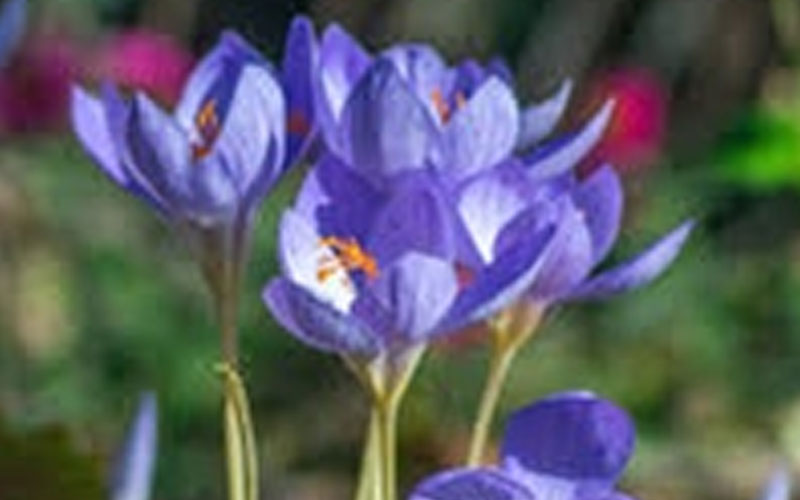We are well into Autumn now and one of the busiest times of year for us gardeners. Thankfully the wet weather in September and early October has meant that we can leave the watering cans behind and get on with some other important jobs. It’s incredible how lush and green everything is again after the drought. It was literally only a few days after the first proper rainfall that the parched yellow grass in the Cloister Garth turned green again. To look around the gardens now you’d never know what a hot, dry summer we had.
We spent a few days a week or so ago planting 1000 autumn crocus (crocus nudiflorus) in the borders along Wisteria Walk and along the Rose Wall. As newly planted bulbs they will probably flower in spring, out of their usual season, but will then revert back and flower again each autumn, filling gaps in the borders with their bright pinky-purple beacons of colour after other flowers have begun to fade.
We also planted 500 Lent Lily daffodils (narcissus pseudonarcissus Lobularis) in clumps in the grass of the Cloister Garth and by the old wall near the willows to add to the display alongside the delicate wild daffodils we put in last year.
An essential autumnal task that has been helped by the rain is resowing areas of wear and tear on the grass paths. The path under the two cherries near the entrance is particularly tricky being in deep shade most of the year and taking increasing footfall as our visitor numbers rise. We’ve prepared the soil and resown in sections, hopefully by the spring the autumn sown seed (already growing away) will withstand footfall and we can re-sow the other parts.
In the meadow we have been re-sowing a few designated areas with more widflower seed after scarifying the thick grass. Over the last few years the dense grass had been outcompeting some of the other meadow plants and flowers. By thinning the grass in specific areas and using a good proportion of yellow rattle (rhinanthus minor) seed we can give other wildflowers a much better chance to get established. The yellow rattle is semi-parasitic on grass and hopefully will keep it in check for a couple of years allowing some annual meadow flowers that have been crowded out like corncockle (Agrostemma githago), corn chamomile (anthemis arvensis), corn marigold (glebionis segetum) and field poppies (papaver rhoeas) to bloom and re-seed. The greater diversity of flowers will not only add visual interest but also provide more food sources and habitat for the pollinators, insects and small mammals who live in and around the meadow.

